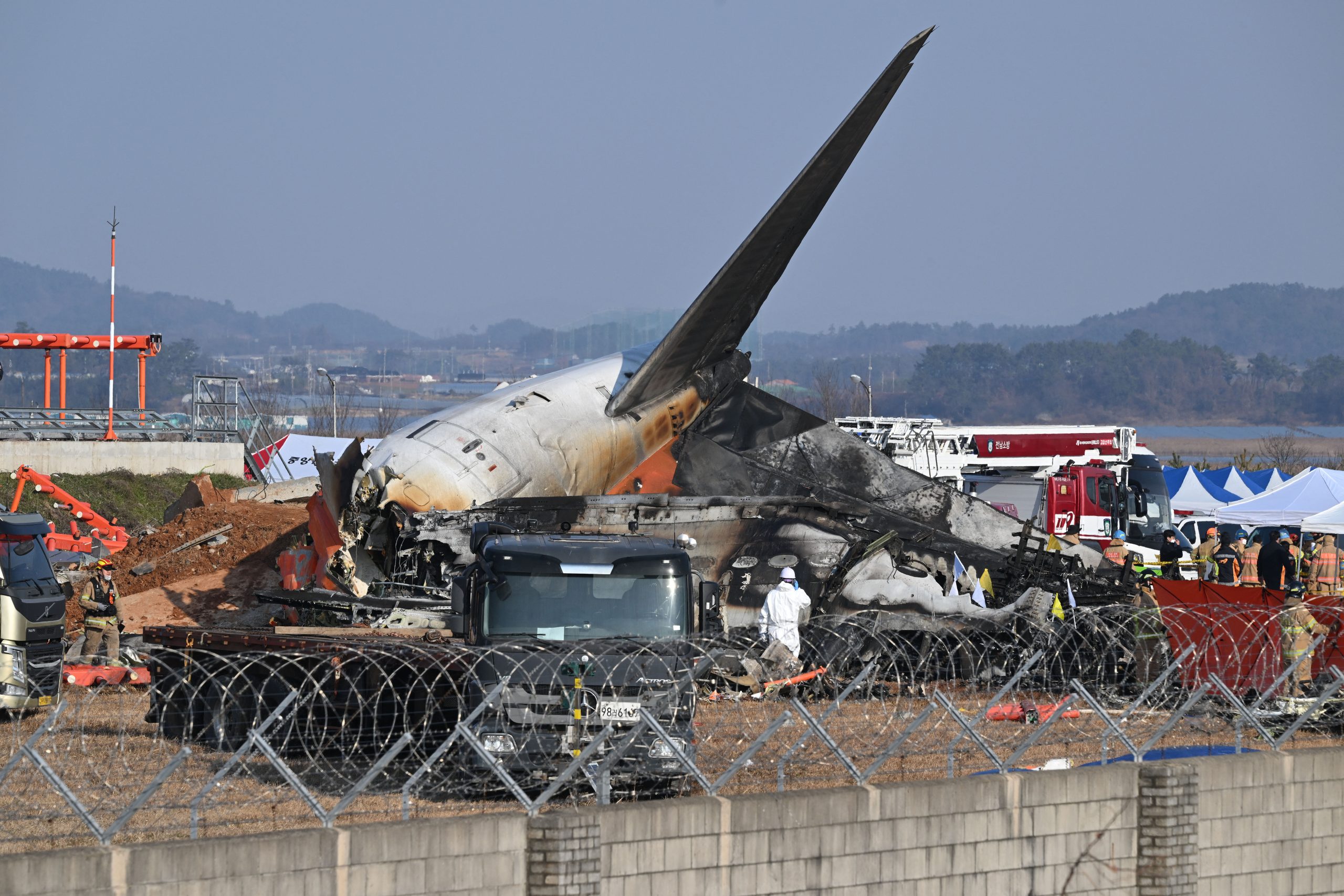
A bird strike was cited by authorities as the likely cause of the crash — the worst ever aviation disaster on South Korean soil — which flung passengers out of the plane and left it “almost completely destroyed”, according to fire officials.
Video showed the Jeju Air Boeing 737-800 landing on its belly at Muan International Airport, skidding off the runway as smoke streamed out from the engines, before crashing into a wall and exploding in flames.
“Of the 179 dead, 65 have been identified,” the country’s fire agency said, adding that DNA retrieval had begun.
Inside the airport terminal, tearful family members gathered to wait for news.
An official began calling out the names of the 65 victims who had been identified, with each name triggering fresh cries of grief from waiting relatives.
Only two people — both flight attendants — were rescued from the crash, the fire department said.
“Passengers were ejected from the aircraft after it collided with the wall, leaving little chance of survival,” a local fire official told families at a briefing, according to a statement released by the fire brigade.
Both black boxes — the flight data recorder and the cockpit voice recorder — have been found, deputy transport minister Joo Jong-wan said at a briefing.
Under floodlights, rescue workers used a giant yellow crane to lift the burned-out fuselage of the orange-and-white aircraft on the runway at Muan — some 288 kilometres (about 180 miles) southwest of Seoul.
Bits of plane seats and luggage were strewn across the field next to the runway, not far from the charred tail, offering a glimpse into the catastrophic impact of the crash.
– ‘Sister went to heaven’ –
All of the passengers were Korean apart from two Thais, with the youngest a three-year-old boy and the oldest a 78-year-old, authorities said.
“I had a son on board that plane,” an elderly man waiting in the airport lounge, who asked not to be named, told AFP.
“My younger sister went to heaven today,” a 65-year-old woman, who gave only her surname Jo, told AFP.
The two survivors were transferred to separate hospitals in Seoul, the Yonhap news agency reported.
“When I woke up, I had already been rescued,” a 33-year-old flight attendant told doctors, according to Ju Woong who heads the Ewha Womans University Seoul Hospital.
He suffered multiple fractures, while the other crew member — a 25-year-old woman — injured her ankle and head, Yonhap reported.
The accident took place in a matter of minutes as Jeju Air Flight 2216 tried to land — with the control tower issuing a warning of a bird strike, and the pilot soon after calling “mayday”.
Video shows the plane coming off the tarmac and hitting a wall, but officials dismissed speculation that the length of the runway was a factor in the crash.
Lee Jeong-hyun, chief of Muan fire station, said the cause was “presumed to be a bird strike” but that the exact details would be announced after a full investigation.
– National mourning –
Low-cost carrier Jeju Air said it “sincerely” apologised — with top officials shown bowing deeply at a press conference in Seoul — and vowed to do all it could to help.
Boeing said in a statement that it was in touch with Jeju Air and stood “ready to support them”.
South Korea’s acting President Choi Sang-mok, who only took office Friday, convened an emergency cabinet meeting and then visited the crash site at Muan.
The country declared a seven day national mourning period effective from Sunday, with memorial altars to be set up nationwide.
It is the first fatal accident in the history of Jeju Air, one of South Korea’s largest low-cost carriers, which was set up in 2005.
On August 12, 2007, a Bombardier Q400 operated by Jeju Air carrying 74 passengers came off the runway due to strong winds at the southern Busan-Gimhae airport, resulting in a dozen injuries.
South Korea’s aviation industry has a solid track record for safety, experts say.
A number of fatal aviation accidents have occurred globally due to bird strikes, which can cause a loss of power if the animals are sucked into the air intakes.
kjk-hs/ceb/rsc/md
© Agence France-Presse






